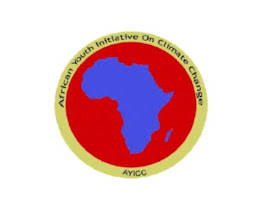From Garissa…….with renewed purpose!
Garissa is located in the so-called Northern frontier in Kenya ’s North Eastern Province , over 350 kms from Nairobi
In my foray to the area I just realized how much the locals know about climate change,how it is affecting them and how they want it addressed. They have very little knowledge about the climate change negotiation processes but nevertheless understand the issues facing them.They talk of flash floods which are alien to them and how they can no longer tell the weather patterns. There is also the issue of invasive species in the form of ‘mathenge’ (Prosopis juliflora) which has extensively covered the area.
Mohammed Sahal, a youth leader with G-Youth (Garissa Youth) says that it has become intolerably hot nowadays, ‘My grandfather who was born and brought up here also feels the heat and complains that its getting too hot’, he says. But what has led to all this, that’s a question residents are trying to answer, most of them believe it is their activities and moreso those of refugees escaping the war in Somalia
Mohammed Khalif an elderly resident of the area notes sadly that ‘drought used to come after 10 years, now droughts come after every two years and flash floods occur way too often’. He fears that the situation may be getting worse and not much is being done so far.
‘The changing climate has forced the community to adopt hitherto unpracticed livelihood means such as beekeeping, riverine farming and trade’ observes the Garissa DDO, Mr Silas Oure. But riverine farming threatens water bodies yet this is what they have turned to for survival, mango farms line up the Tana river which passes through the area.
Jimmy Kimaita a youth from the area whose group has been involved in a programme with KWS to save gazelles and giraffes which are being hunted down by refugees says that refugees are driving environmental degradation hence climate change in the area. Young people in the area are taking up the challenge to address issues, there are not many trees in the area for instance thus they are setting up tree nurseries.
Garissa town is however garlanded with a considerable amount of trees, Jimmy explains that this is as a result of the efforts of a former local leader who initiated a ‘one tree per shop’ rule in the 1960’s.
Mohammed Adan a gypsum miner in the area says that indeed times have changed and livestock keeping no longer holds promise especially since the advent of the invasive Prosopis juliflora. The species is competing for pasture lands which are already scarce, where it grows nothing else thrives and livestock cannot penetrate to reach grass. He is emphatic that the species grows only where human hands have touched thus blames its spread on human activity.
North Eastern Province of Kenya unfortunately is among the areas which bears the brunt of climate change effects in Kenya
The situation needs to change and the youth in the area are taking up the challenge to find solutions to climate change, hopefully it wont be too little to late!


Good stuff Winnie. We really hope the leaders in the northern Kenya, just as the rest of the country, will treat this as,among other priorities, a developmental issue so that it is given the attention that it deserves. And the rest of the community members need to adopt best practices. I like the idea that one of the leaders initiated: one tree for every shop, hope it continues and more innovative strategies developed and adopted.
ReplyDeleteThanks Winnie for this post!!!
ReplyDeleteHave i ever told you are just the writer that AYICC needs? I encourage you keep writing and sharing your work wit the world, its gonna take you places!!!! Asante sana
Thanks Winnie for this great report and raising the issue of potential conflicts between refugees and local communities.This has been reported before in other countries (DR Congo, Tanzania, Burundi...Due to their massive use of natural resources-trees and forests in particular-refugees can cause climate change to happen and the latter can lead to ecological refugees (eg. Karamajongs in Uganda)
ReplyDeleteWinnie, I am without words. It feels very nice to read exactly what I heard in a very interesting language. You are actually a writer as Grace puts it. Keep up!
ReplyDeleteThanks for the great comments and encouragement....I will keep writing.
ReplyDelete@Bildad,unfortunately the leader who initiated this is long gone and there are no new efforts at replicating or continuing with the initiative.....
@Grace,am getting onto it,you definitely led the way :)We need to get all the stories out there.
@Landry,its true, its rarely talked about even when reported yet its a time bomb,near the refugee camps there is so much tension with the host communities and another community nearby is up in arms against the setting up of a camp in their locality because of what has happened to the areas around Daadab refugee camp.
@Kim,thanks and am waiting to read your piece.